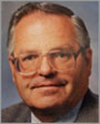Medical device manufacturing is not an easy process. If anything goes wrong, the entire batch of products is at stake. Is there any solution to it? DHF, DMR, and DHR are the three Ds of medical device that needs to be managed carefully.
Even though these files serve different purposes, it is essential to understand how they are mutually inclusive for effective technical documentation. This seminar offers a deeper insight into the documentation part of medical device manufacturing. Moreover, the seminar will cover the latest requirements proposed by FDA and European Union.
Let’s dive deeper into the topics covered!
Course Overview
Breaking down each of these terms for a better understanding of freshers into medical device manufacturing.
- Design History File (DHF): Includes an entire history of the device’s design, which justifies the currently approved design.
- Device Master Record (DMR): Associated with device production and highlights the requirements like material, equipment, and surroundings.
- Device History Record (DHR): Contains production-related documents which consist of dates, quantity, and labels of final products.
It is essential to have proper knowledge of technical documentation because these are submitted to the FDA. Additionally, these play an important role in pre-market approval of the device. It is crucial for regulatory compliance and this course focuses on future trends and the typical table of contents.
The core purpose of this seminar is to highlight the general safety and performance requirements. Moreover, the coach pays special attention to the file auditing process by FDA and notified the body to make the execution of the concept easier for professionals.
Agenda
Session 1
- Introduction
- Design Control Under 21 CFR 820.30
- Design and Development Planning under ISO 13485:2016 7.3
- The U.S. FDA's DHF
- The EU MDR's D&DPF
- MDR's "General Safety and Performance Requirements"
- Device Classification - U.S. FDA vs. EU MDD
- Design Files' "Typical" Contents
- The DMR and DHR / Lot / Batch Record TD Expected Contents
Session 2
- Risk Management / File Under ISO 14971
- Narrative
- Hazzard Analysis
- FTA
- D-, P-, and U-FMECA's
- Report
Session 3
- Human Factors / Use Engineering Under IEC 62366-1:2015
- The User Interface
- The 9 Stages
- The HF / UE File
Session 4
- Putting It All Together
- Design Control
- The Team
- Concurrent Compilation of the Three Files
- Derivative Documents Development
- Completion
- FDA and NB Audit Focus
- Final Q & A
Speakers

John E. Lincoln,
Principal Consultant ,
J. E. Lincoln and Associates LLCJohn E. Lincoln is principal of J. E. Lincoln and Associates LLC, a consulting company, with over 33 years’ experience in U.S. FDA-regulated industries and 20 years as a full-time consultant. He has worked with companies from start-up to Fortune 100, in the U.S., Mexico, Canada, France, Germany, Sweden, China and Taiwan.
He specializes in quality assurance, regulatory affairs, QMS problem remediation and FDA responses, new / changed product 510(k)s, process/ product/ equipment including QMS and so+E6ftware validations, ISO 14971 product risk management files / reports, design control / design history files, and technical files. He's held positions in manufacturing engineering, QA, QAE, regulatory affairs, to the level of director and VP (R&D). In addition, Mr. Lincoln has prior experience in military, government, electronics, and aerospace. He has published numerous articles in peer reviewed journals, conducted workshops and webinars worldwide on CGMP subjects. He is a graduate of UCLA.
Who Should Attend
- Quality and Research Analyst: To verify regulatory compliance effectively and document everything as per the norms.
- R&D Professionals: Incorporate device history and master records for innovative changes
- Engineering: To understand the mechanism and design effectively
- Production: To be able to create an estimate of the project and timeline of the manufacturing process
- Marketing: Knowing the in and out of a product will allow these professionals to execute marketing strategies effectively









